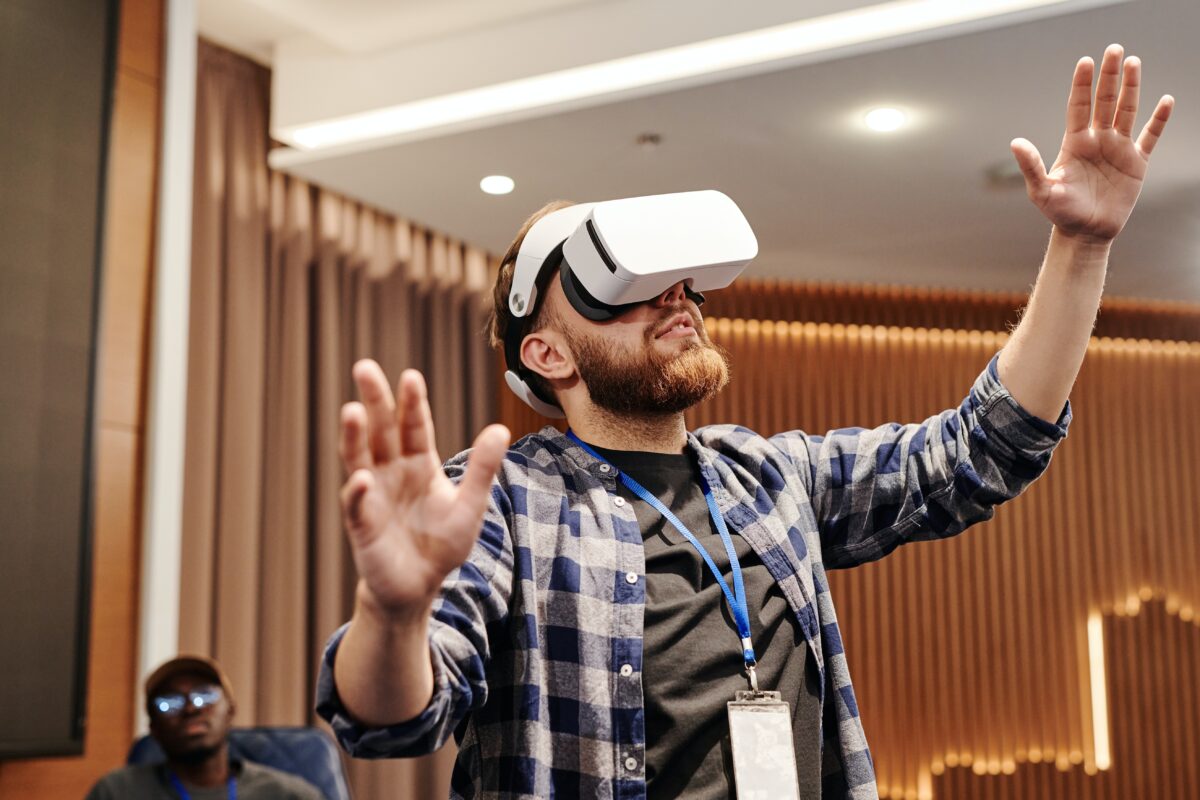With the advancement of technology, many industries are evolving and changing the way they work. Industries like real estate are no exception and seem to adopt such technologies.
The introduction of Augmented Reality (AR) and Virtual Reality (VR) in the real estate industry is transforming the methods of designing, buying, and selling properties. It can create an immersive walk-through where buyers can visualize and interact with the property.
Implementing AR/VR technology can benefit both realtors and buyers. It has the potential to make a huge impact on the real estate industry.
Implementation of AR/VR in Real Estate
Implementing AR/VR can help in various segments of real estate. Here are some practical uses of this technology to improve the process.
- Virtual Tours
Before deciding which one to buy, every buyer tries to visit several properties to see which one matches their needs. This process is quite time-consuming and requires a lot of travel.
To eliminate such problems, AR/VR is a perfect solution for real estate preview. It can save time and money for both realtors and buyers.
With virtual tours, buyers can visit multiple properties located in distant places. They do not need to worry about travel and associated costs and can experience the tour by staying at their homes.
With AR-based applications or through a VR headset they can explore and interact with the exterior and interior of the property. One can experience a 3D virtual tour through a 360-degree video or through an advanced interactive virtual tour.
- Architectural Visualization
Virtual real estate solutions can be a great help for realtors to showcase such properties that haven’t been constructed yet.
With architectural visualization, realtors can visualize the future look of the property. AR/VR technology has the ability to create 3D virtual models of such properties and can add digital objects to them.
It is much cheaper and time-saving compared to the physical 3D model showrooms. Apart from cost factors it also provides an immersive experience that can enhance their marketing efforts.
The ability to visualize the exterior and interior of the property increases the buyer’s interest which can make them potential buyers.
- Virtual Staging
Empty spaces or with very little interior can give buyers a mixed feeling. It may look less appealing to the buyers and may reduce the chances of buying.
But through virtual staging realtors can change or add more interiors to the property that can make it look more appealing.
It enables the buyers to make changes to the interior of the property and can design them according to their preferences. This substantially increases the buyer’s interest which can result in selling the property faster at a reasonable price.
Realtors can save money as virtual staging costs less than the physical one. It also requires less time and effort to plan and virtually stage the property.
Benefits of Using AR and VR in Real Estate
Implementing AR/VR in real estate can enhance the process and can make it more convenient. The main benefits of using AR/VR in real estate are:
- It’s Cost-effective
AR/VR technology is transforming traditional real estate marketing efforts.
It may seem quite expensive to create such 3D virtual models and add digital content to them. But this investment helps realtors to replace costly property staging, scale models, and printed materials.
By using a 360-degree video or advanced interactive virtual tour, realtors can conduct a property showcase. Real interior design, furniture, and other items are replaced by 3D models and can be redesigned when the concept changes.
This technology significantly saves a lot of money for realtors and is an effective way to connect to new prospects.
- Saves Time
Virtual platforms for real estate can save time for both realtors and buyers. With virtual tours and staging, the real estate preview can become a much faster process.
Realtors and buyers do not need to worry about losing valuable time to travel. With AR/VR technology, realtors can conduct virtual tours while staying in their offices or at home.
Buyers can take such tours without visiting any physical sites and can stay at their homes. With AR-based applications and VR headsets, they can take virtual tours from anywhere and at any hour of the day.
- Better Engagement
Implementing AR/VR in real estate can get the buyers more interested and involved. With virtual tours and staging, realtors can provide an immersive experience to their customers.
Unlike traditional visualization, buyers can now focus more on details. It’s not limited to viewing just pictures and videos of the property. But brings the ability to explore and visualize the exterior and interior of the property.
Virtual tours provide an interactive and realistic virtual environment that enhances better engagement. And dealing with such engaged customers has a better chance of transforming them into potential buyers.
- Global Offering
AR/VR has the potential to reach long-distance buyers. It completely eliminates distances and geographical barriers.
People tend to move from place to place, country to country, and even across the globe. Because of virtual platforms, buyers can view properties from anywhere in the world.
With virtual tours and staging, realtors can provide an immersive experience to global buyers. This helps them to widen their reach and is no longer limited to local buyers.
Implementing AR/VR can help realtors to reach more clients and can impact demand in real estate.
- Real-time Behavioural Analytics
Implementing AR/VR in real estate can help realtors to collect valuable data. They can measure and track every interaction made by the buyers during a virtual tour.
AR/VR can indicate what part of the virtual walkthrough the buyers are paying the most attention to. It helps to observe the buyer’s behavior and their engagement in real-time. And all those data help the realtors to measure the overall impact of their virtual tour.
The ability to gather such analytics can help to improve future interactions and marketing strategies.
Conclusion
Augmented reality and virtual reality are transforming the real estate industry. As AR/VR is becoming more accessible, the implementation of this technology has become much easier.
Investment in this technology is already proving to be a valuable asset for the real estate industry. And this will continue to enhance their business growth and widen their reach.
With XR technology-based platform like our very own AwventXR, we can help you to plan, create and host an immersive and engaging home viewing experience.




